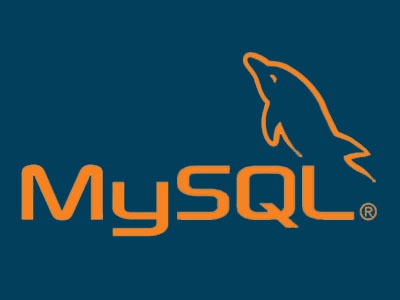 Backend Development
Backend Development
 C#.Net Tutorial
C#.Net Tutorial
 How to use enumeration values? Summary of enumeration value instance usage
How to use enumeration values? Summary of enumeration value instance usage
How to use enumeration values? Summary of enumeration value instance usage
This article mainly introduces the relevant information about C# getting the corresponding text description from the enumeration value. Friends who need it can refer to the C# getting the corresponding text description from the enumeration value. Sometimes when the enumeration value is displayed, it needs to Displays the text string corresponding to the enumeration value. One solution is to use switch or if to judge the enumeration value at the place of call, and then assign it to different text strings, but this will be more troublesome if it is used in many places. Of course, some people say that in this case, you can encapsulate a method for this enumeration value and then call it. What if there are multiple enumeration types that have such a requirement? Is there any more general solution? some. You need to use the Description attribute here, assign this attribute to each enumeration value, and then assign the text string to be described in this attribute. For example #region YesNoEnum public enum YesNoEnum { [Description(&

##Introduction: This article mainly introduces the relevant information on how C# obtains the corresponding text description from the enumeration value. Friends in need can refer to the following
2. Detailed explanation of sample code for extending enumeration list in XML schema

Introduction : Adding a new value to a list is a common and necessary requirement. Schema designers often want to build a way to add additional value to the system architecture, and how this additional value is created is unknown to the schema designer during the design phase. An extensible, easy-to-implement enumeration value list? This article will introduce several methods to achieve this goal. Pattern designers and implementers need an extension
##3.HTML5 study notes concise version (5): input type super type

4.
 ##Introduction: LIST partition and RANGE partitioning is very similar. The main difference is that LIST is a collection of enumerated value lists, and RANGE is a collection of continuous interval values. The syntax of the two is very similar. It is also recommended that the LIST partitioning column be a non-null column, otherwise a null value will be inserted. If there is no null value in the enumeration list, the insertion will fail. This is different from other partitions. The RANGE partition will store it as the minimum partition value. HASH\KEY will convert it into 0 for storage. The main LIST partition only supports it. Integer and non-integer fields need to be converted into integer through functions; after version 5.5, function conversion is not required and the LIST COLUMN partition is used to support non-integer fields. In the COLUMN partition
##Introduction: LIST partition and RANGE partitioning is very similar. The main difference is that LIST is a collection of enumerated value lists, and RANGE is a collection of continuous interval values. The syntax of the two is very similar. It is also recommended that the LIST partitioning column be a non-null column, otherwise a null value will be inserted. If there is no null value in the enumeration list, the insertion will fail. This is different from other partitions. The RANGE partition will store it as the minimum partition value. HASH\KEY will convert it into 0 for storage. The main LIST partition only supports it. Integer and non-integer fields need to be converted into integer through functions; after version 5.5, function conversion is not required and the LIST COLUMN partition is used to support non-integer fields. In the COLUMN partition
##5. PropertyGrid The enumeration in is displayed in Chinese
Introduction: The enumeration in PropertyGrid is displayed in Chinese. In system development, PropertyGrid is often used to modify or display the properties of an object. , if an enumeration is defined in the class, the enumeration items or enumeration values will be displayed by default, but this is not what we want. The user does not know what the item represents when using it. The enumeration shows
[Related Q&A recommendations]:
Architecture design - JAVA side error codes and error messages, should they be designed as global constants or Enumeration value?
java - copy(InputStream in, Path target, CopyOption... options) using
Access method of enumeration value in C/C++
The above is the detailed content of How to use enumeration values? Summary of enumeration value instance usage. For more information, please follow other related articles on the PHP Chinese website!

Hot AI Tools

Undresser.AI Undress
AI-powered app for creating realistic nude photos

AI Clothes Remover
Online AI tool for removing clothes from photos.

Undress AI Tool
Undress images for free

Clothoff.io
AI clothes remover

AI Hentai Generator
Generate AI Hentai for free.

Hot Article

Hot Tools

Notepad++7.3.1
Easy-to-use and free code editor

SublimeText3 Chinese version
Chinese version, very easy to use

Zend Studio 13.0.1
Powerful PHP integrated development environment

Dreamweaver CS6
Visual web development tools

SublimeText3 Mac version
God-level code editing software (SublimeText3)

Hot Topics
 .NET Deep Dive: Mastering Asynchronous Programming, LINQ, and EF Core
Mar 31, 2025 pm 04:07 PM
.NET Deep Dive: Mastering Asynchronous Programming, LINQ, and EF Core
Mar 31, 2025 pm 04:07 PM
The core concepts of .NET asynchronous programming, LINQ and EFCore are: 1. Asynchronous programming improves application responsiveness through async and await; 2. LINQ simplifies data query through unified syntax; 3. EFCore simplifies database operations through ORM.
 How to use char array in C language
Apr 03, 2025 pm 03:24 PM
How to use char array in C language
Apr 03, 2025 pm 03:24 PM
The char array stores character sequences in C language and is declared as char array_name[size]. The access element is passed through the subscript operator, and the element ends with the null terminator '\0', which represents the end point of the string. The C language provides a variety of string manipulation functions, such as strlen(), strcpy(), strcat() and strcmp().
 How to use various symbols in C language
Apr 03, 2025 pm 04:48 PM
How to use various symbols in C language
Apr 03, 2025 pm 04:48 PM
The usage methods of symbols in C language cover arithmetic, assignment, conditions, logic, bit operators, etc. Arithmetic operators are used for basic mathematical operations, assignment operators are used for assignment and addition, subtraction, multiplication and division assignment, condition operators are used for different operations according to conditions, logical operators are used for logical operations, bit operators are used for bit-level operations, and special constants are used to represent null pointers, end-of-file markers, and non-numeric values.
 What is the role of char in C strings
Apr 03, 2025 pm 03:15 PM
What is the role of char in C strings
Apr 03, 2025 pm 03:15 PM
In C, the char type is used in strings: 1. Store a single character; 2. Use an array to represent a string and end with a null terminator; 3. Operate through a string operation function; 4. Read or output a string from the keyboard.
 Avoid errors caused by default in C switch statements
Apr 03, 2025 pm 03:45 PM
Avoid errors caused by default in C switch statements
Apr 03, 2025 pm 03:45 PM
A strategy to avoid errors caused by default in C switch statements: use enums instead of constants, limiting the value of the case statement to a valid member of the enum. Use fallthrough in the last case statement to let the program continue to execute the following code. For switch statements without fallthrough, always add a default statement for error handling or provide default behavior.
 How to handle special characters in C language
Apr 03, 2025 pm 03:18 PM
How to handle special characters in C language
Apr 03, 2025 pm 03:18 PM
In C language, special characters are processed through escape sequences, such as: \n represents line breaks. \t means tab character. Use escape sequences or character constants to represent special characters, such as char c = '\n'. Note that the backslash needs to be escaped twice. Different platforms and compilers may have different escape sequences, please consult the documentation.
 What is the function of C language sum?
Apr 03, 2025 pm 02:21 PM
What is the function of C language sum?
Apr 03, 2025 pm 02:21 PM
There is no built-in sum function in C language, so it needs to be written by yourself. Sum can be achieved by traversing the array and accumulating elements: Loop version: Sum is calculated using for loop and array length. Pointer version: Use pointers to point to array elements, and efficient summing is achieved through self-increment pointers. Dynamically allocate array version: Dynamically allocate arrays and manage memory yourself, ensuring that allocated memory is freed to prevent memory leaks.
 How to convert char in C language
Apr 03, 2025 pm 03:21 PM
How to convert char in C language
Apr 03, 2025 pm 03:21 PM
In C language, char type conversion can be directly converted to another type by: casting: using casting characters. Automatic type conversion: When one type of data can accommodate another type of value, the compiler automatically converts it.





